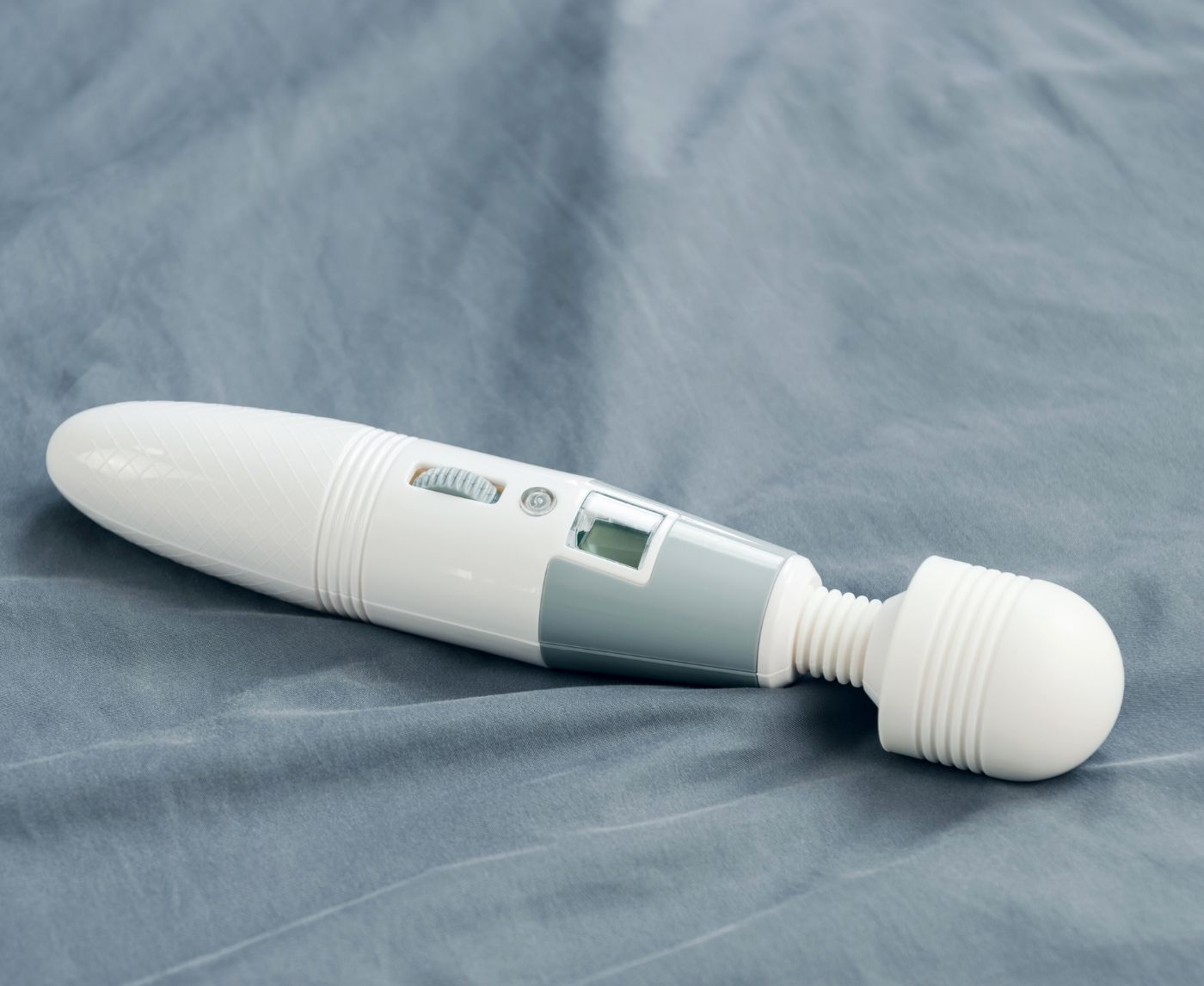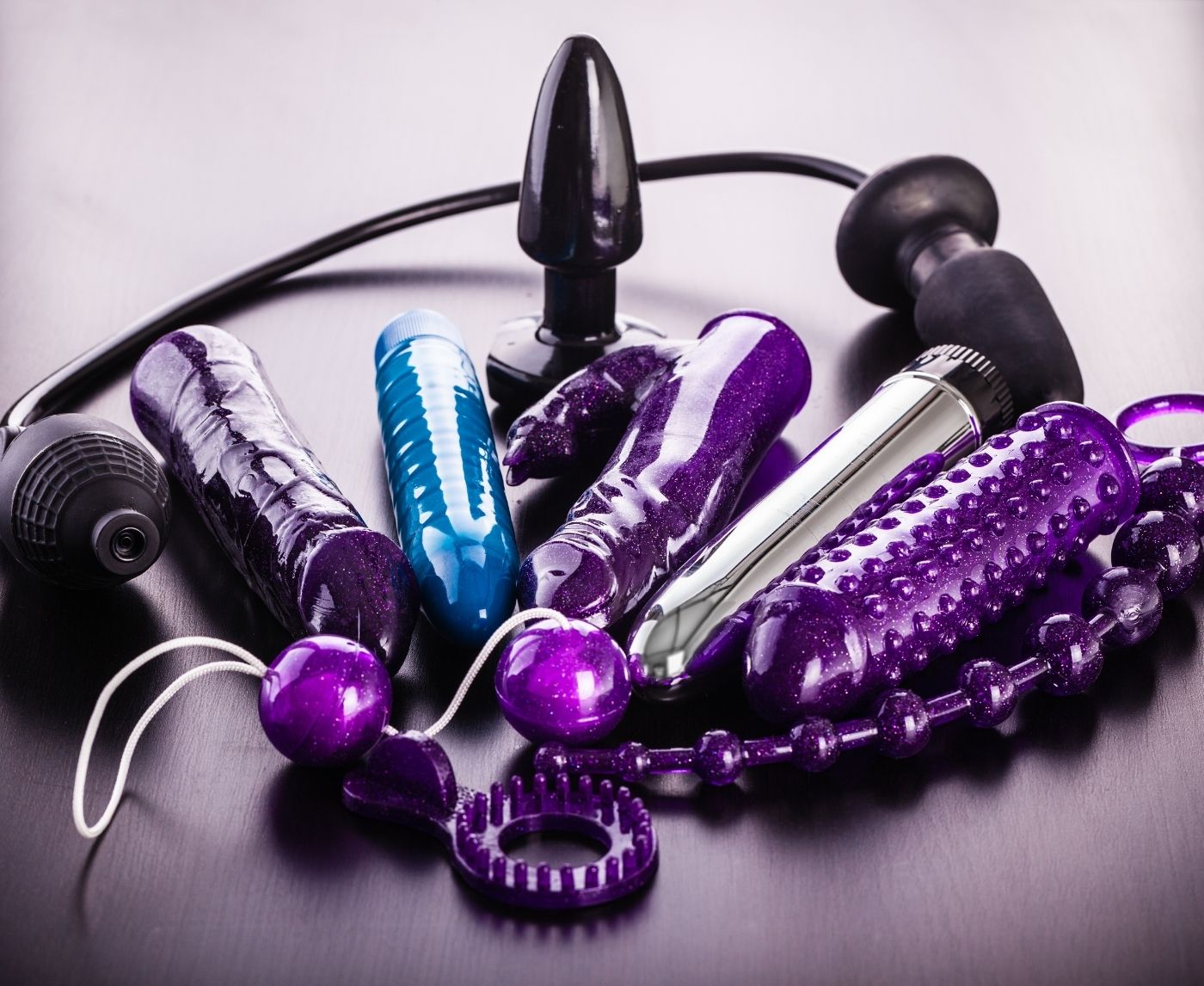Can You Get an STD from Oral or Toys? These Kits Can Tell You
Quick Answer: Yes, sharing a vibrator can transmit STDs, especially if it’s not properly cleaned between uses. Infections like chlamydia, gonorrhea, HPV, herpes, and trichomoniasis can all survive on sex toys and be passed from one person to another.
“It Looked Clean”, But That’s Not Enough
Let’s be honest: most people don't rinse their toys between users the way they’d clean, say, a dental tool. A quick rinse under hot water, a swipe with a towel, maybe a spritz of toy cleaner if it’s nearby, that’s often the best-case scenario. Just because something looks clean doesn't mean that germs, viruses, and body fluids are gone.
A 2021 study in the journal Sexually Transmitted Diseases found that some STDs can live on smooth surfaces like plastic or silicone for hours or even days. If a toy was used internally, wasn't sanitized, and is used again within that window, transmission is absolutely possible.
In other words, it doesn’t have to be “gross” to be risky. A vibrator that smells like lavender and sparkles like it’s fresh out of the package might still be carrying viral particles or bacteria, especially if it was just used the night before during an anal-to-vaginal session or shared without a barrier.
What STDs Can You Get from a Shared Sex Toy?
Let’s talk specifics, because the fear here isn’t abstract. These are the infections that can be transmitted via shared sex toys, and what makes them more or less likely to survive on those surfaces:
Table 1. STD transmission likelihood via shared sex toys based on surface survival and fluid transfer.
This isn’t hypothetical. According to the CDC, sex toys that are shared without proper cleaning or barrier use are considered a high-risk activity for STI transmission. And unlike sexual contact, where partners might have a conversation about protection, sex toys often get passed around without that same level of discussion.

People are also reading: What Does HPV Look Like in Men? (Sometimes, Nothing at All)
Case Study: The Party Favor That Came With More Than Memories
Ali, 28, didn’t realize something was wrong until the itching wouldn’t stop. It was three days after a friend's birthday weekend, what they jokingly called “a vibe rave.” Everyone had brought a toy to share, some still in their packaging, others clearly used. There were condoms on most of them, but by the end of the night, no one remembered which ones had been swapped or who used what.
"It was meant to be fun and empowering. But then I got a call from one of the girls saying she tested positive for trich. I had no symptoms until the itching started."
Ali tested positive for trichomoniasis, an infection that often flies under the radar but can cause irritation, discharge, and painful sex. She hadn’t had penetrative sex that night, just toy play. But that was enough.
Her story isn’t uncommon. In fact, a 2019 study in Sexual Health emphasized the need for better public understanding of how sex toys contribute to STI transmission, especially in group or polyamorous settings where sharing may be normalized.
Why Soap and Water Aren’t Always Enough
You might think a quick wash is enough, but not all cleaning methods are created equal. Imagine a silicone toy that you just washed in warm water and then left to dry on the bathroom counter. It looks clean to the naked eye. But invisible traces of vaginal fluid, semen, or rectal bacteria can still cling to the surface, especially in textured areas or seams.
Even worse, using oil-based lubes, silicone lubes, or shared storage pouches can allow infections like HPV or herpes to remain viable for longer than you’d expect. Disinfecting a toy is about more than scent, it’s about neutralizing microscopic threats that don’t always leave behind a clue.
Here’s how common cleaning methods stack up when it comes to eliminating STI risk from shared sex toys:
Table 2. Effectiveness of common sex toy cleaning methods against STD-causing pathogens.
And what about condoms on toys? Great idea, if they’re changed between users and not reused. But many people forget this crucial step or assume the toy is clean just because a condom was used once. If you’re in a multi-partner situation or toy is going from anus to vagina, it’s essential to swap that barrier every time.
How Long Can STDs Live on a Sex Toy?
This is where things get a little gross, and a lot more real. Different infections survive for different lengths of time depending on the material, moisture, and temperature. Here's a breakdown of typical survival times on common sex toy surfaces:
Table 3. Estimated survival times of common STDs on sex toy materials.
In other words, just because the toy was sitting unused overnight doesn’t mean it’s safe. If the material holds moisture or was stored improperly, you could still be exposed to infectious agents, especially if used internally or passed from anal to vaginal play without sanitizing.
What to Do If You’ve Already Shared a Toy
So you didn’t know. Or you thought it was fine. Or maybe you trusted someone who didn’t disclose everything. Whatever brought you here, know this: you’re not alone, and you’re not screwed. But you do need a plan.
Start by asking yourself a few key questions: When was the toy last used with someone else? Was there visible fluid or irritation afterward? Have you noticed any itching, discharge, burning, or discomfort since? Even subtle changes, like unusual vaginal odor or pelvic heaviness, can be clues that something’s not right.
That said, many infections don’t cause immediate symptoms. HPV can stay silent for years. Chlamydia and gonorrhea can sit undetected in the rectum, cervix, or throat. That’s why testing, even when you feel fine, is the smartest move you can make.
Timing matters, too. Here’s how to think about it:
If it’s been less than 7 days since exposure, a test might be too early to catch certain infections like chlamydia or trich. But if you're feeling anxious, an early baseline test is okay, as long as you follow up 2–3 weeks later to confirm.
If it’s been 10–14 days, you're right in the sweet spot for most rapid at-home tests to detect bacterial STDs. If it’s been longer, test now and again in a month if new symptoms pop up or you're unsure.
Story: “It Wasn’t Even Sex, But I Still Got Something”
Monica, 34, didn’t think twice when her best friend offered to lend her a high-end vibrator. “It was expensive and amazing,” she said. “I used it once, didn’t clean it after, just threw it in my drawer.” A week later, she noticed an unusual smell and some itching. She chalked it up to stress. A month later, during her annual OB-GYN visit, her chlamydia test came back positive.
“I was shocked. I hadn’t even slept with anyone in months. I told my doctor the only thing I used was that toy, and she said that was probably enough.”
Monica’s partner had no symptoms and tested negative. The toy was the only link. And it taught her a painful but necessary lesson about assumptions, cleaning, and the quiet ways infections can slip into our lives.
Testing From Home: Fast, Private, and Accurate
If your stomach dropped reading any of this, take a breath. That’s your survival instinct kicking in. Good news? Testing has never been easier. You don’t need to sit in a clinic or explain anything to a stranger. You can get answers in minutes with at-home rapid kits, and you don't even have to leave the house.
You can buy single STD Rapid Test Kits or discreet combo packs that include tests for chlamydia, gonorrhea, syphilis, HIV, trich, and more. These tests have been shown to work in real life, are easy to use, and give results quickly with clear instructions.
You deserve to know what's going on, whether it's a bump, an itch, or that nagging "what if?" This at-home combo test kit quickly and discreetly checks for the most common STDs.
Your privacy, your results, your peace of mind.

People are aslo reading: When Pink Eye Is Actually an STD: What to Look For
How to Talk to a Partner About It
This might be the hardest part, but it’s also the most powerful. If you used or shared a toy with someone and now feel unsure, bringing it up doesn’t have to mean panic or blame. Try something like: “Hey, I’ve been learning more about sex toy hygiene and STDs. I just want to be sure we’re both safe. Would you be open to testing or talking about how we use our toys going forward?”
If the partner is new, casual, or part of a group scenario, you can still communicate respectfully. Boundaries don’t need backstories to be valid. Asking about cleaning protocols, condom use on toys, or exclusivity in play is not overreacting, it’s self-protection.
And if they react poorly? That’s data. You deserve to feel safe, respected, and informed in your sex life. Period.
When It’s Not Just About the Infection
This isn’t just about germs. It’s about trust, control, and that weird emotional space sex toys occupy, both intimate and casual, both yours and sometimes not. When someone shares a toy without asking, or offers you one with a shrug and a “Don’t worry, I cleaned it,” it can leave you feeling off in more ways than one.
Lena, 25, described it best: “It wasn’t that I was mad he used it with someone else, I knew he was seeing other people. It was that he didn’t even think to tell me. I only found out because I noticed it smelled like a different lube.” The infection test came back negative, but the breach of trust? That left its own kind of scar.
Sexual health isn’t just about swabs and windows. It’s also about boundaries. About how we take care of each other when we’re naked, vulnerable, and exploring. Asking if a toy has been used recently isn’t killing the mood, it’s being emotionally fluent enough to keep things hot and safe.
And if you’re the one offering your toy to someone else, own that moment. “Hey, I used this last week, want me to boil it or grab a new one?” says so much more than you think. It says: I respect your body. I see you. I’m not just here for me.
We clean our forks before guests eat with them. Our gym gear. Our makeup brushes. Why should the things we put inside our most intimate places get any less care?
This doesn’t have to be awkward or clinical. It can be playful. It can be empowering. It can even be hot. Because nothing kills the mood faster than the itching you didn’t expect, or the test result that leaves you spiraling weeks later.
So if you’re here because your vibe feels a little off, or you’re just wondering what risks you’ve taken, it’s not too late to take control. You don’t need permission to prioritize your safety. You just need the facts, and a kit that gets you answers.
STD Rapid Test Kits makes that easy. No appointments. No judgment. Just real knowledge, fast. Because you deserve more than assumptions. You deserve answers.
FAQs
1. Can you actually get an STD from a sex toy?
Yep, especially if it wasn’t cleaned or covered between partners. Think of it like sharing a used toothbrush after someone bled from their gums. A sex toy can carry fluids, bacteria, and even skin cells that transmit chlamydia, gonorrhea, herpes, or trich. It’s not about being gross, it’s just how biology works.
2. It was just a one-time thing, am I really at risk?
One time is all it takes. If the toy had been used within a few hours, or if it was passed around during the same session, you’re in that risk window. Even if you feel fine, some STIs don’t show symptoms right away, or ever. That’s why testing is more about peace of mind than punishment.
3. But we used a condom on the toy, is that enough?
It helps a lot, but only if the condom was changed between people and orifices. If someone used the same barrier from anal to vaginal play or forgot to swap it out between users, it’s like using the same toothbrush in two mouths. Not ideal.
4. How long do STDs actually survive on a toy?
Depends on the infection and the surface. HPV can hang out on silicone for days. Chlamydia and trich love warm, moist environments and can linger for hours. If that vibe was sitting in a drawer unwashed since last night’s hookup, don’t assume it’s clean just because it’s dry.
5. It didn’t smell or look dirty, so what’s the big deal?
Most STIs don’t leave visible marks. Herpes, for example, can spread even without active sores. You can't see or smell bacteria or viruses on a toy that looks clean. It's not about being ashamed; it's about being safe.
6. I used a borrowed toy and now I feel...off. What should I do?
Listen to your body. If you’ve got itching, discharge, odor changes, pain during sex, or even just a gut feeling that something’s off, get tested. It’s easy, private, and gives you power back. This combo test checks for the most common infections.
7. How soon should I test after sharing a toy?
Ten to fourteen days after exposure is the sweet spot for most bacterial STIs. But if you're panicking now, you can test sooner and do a follow-up later. No shame in testing twice, it’s your health.
8. Could I really get herpes from a vibrator?
Yes. Even without visible sores, herpes can shed from the skin and transfer via toy surfaces, especially if used without a barrier or cleaning. A wipe-down with a towel won’t cut it. You need real sanitation.
9. Do I need to throw out a toy that might be contaminated?
Not always, but if it’s porous, uncleanable, or tied to a stressful memory, consider letting it go. For nonporous toys like medical-grade silicone or glass, a boil or bleach soak (if compatible) can sterilize. Your mental safety matters just as much as physical.
10. I want to share toys safely. What’s the move?
Condoms on toys, changed between every user and orifice. Clean thoroughly before and after play, ideally with something stronger than hand soap. And talk about it beforehand. “Hey, what’s your vibe on cleaning toys?” is a hotter question than you think.
You Deserve Answers, Not Assumptions
You might not have thought you'd be having this talk. But now that you are, here's what you need to do: stay informed, take action, and be nice to yourself. It isn't always bad to share toys, but sharing without rules, cleanliness, or permission can have serious effects. You can take charge starting today, though.
Don’t wait and wonder, get the clarity you deserve. This at-home combo test kit checks for the most common STDs discreetly and quickly.
How We Sourced This Article: We combined current guidance from leading medical organizations with peer-reviewed research and lived-experience reporting to make this guide practical, compassionate, and accurate.
Sources
1. Women Who Have Sex with Women (WSW) — CDC
2. Everything You Need to Know About — Healthline
3. Sex toys and the risk of HIV transmission — aidsmap
4. Sexual Transmission of Zika Virus — CDC
5. Be Safe: Prevent Sexually Transmitted Infections — U.S. Department of Veterans Affairs (VA)
6. Can you get an STD or STI from sharing sex toys? — Consent Culture
7. STIs: common questions and misconceptions — Clue
8. Can STIs be transmitted via sex toys? — Ending HIV
About the Author
Dr. F. David, MD is a board-certified infectious disease specialist focused on STI prevention, diagnosis, and treatment. He blends clinical precision with a no-nonsense, sex-positive approach and is committed to expanding access for readers in both urban and off-grid settings.
Reviewed by: Dr. Kira Menon, MPH | Last medically reviewed: November 2025
This article is for informational purposes and does not replace medical advice.







